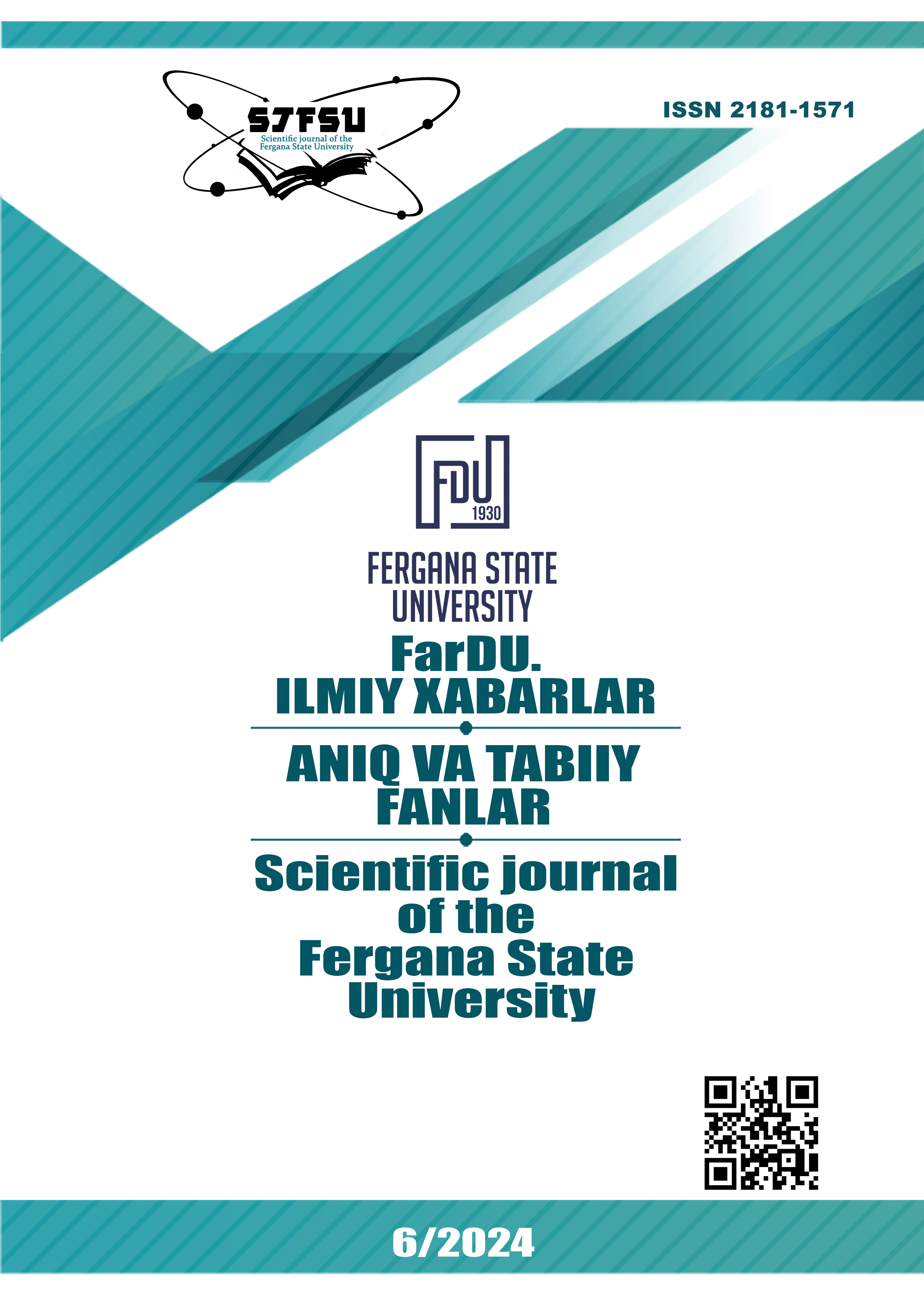THERMAL ANALYSIS OF CHITIN AND CHITOSAN SUBSTANCES FROM MAY BEETLE
Keywords:
raw material, May beetle, chitin, chitosan, thermal analysis, thermogram, differential scanning colorimetry, degree of deacetylation, degree of crystallinity, polymorphic form.Abstract
Chitin and chitosan, like many other compounds containing carbon and nitrogen elements, are actively involved in the global cycles of these elements in nature. Chitin has three main sources in nature (shells of crustaceans, cuticles of insects and cell walls of mycelial fungi). As an alternative source to the main raw materials of chitin and chitosan, which are widely used in world practice, chitin (polymorphic form γ, degree of crystallinity 24.80%) was isolated from the May beetle, which is widespread in our country and has a high reproduction rate, and was converted into chitosan (degree of crystallinity 11.30%) with a deacetylation degree of 89.1%. Thermal analysis of these substances revealed that the maximum decomposition temperature of chitin is 365.20 ºC, and that of chitosan is 292.53 ºC, and these values vary depending on the polymorphic form of the chitin substance, the degree of crystallinity, the size of the macromolecule, and the degree of deacetylation of chitosan.
References
Sh.Karimov, A.Xaitbayev. Xitozan ajratib olish usullarini optimallash. FarDU ilmiy xabarlar. 2022-yil 6-son. 472-475 b.
В.П. Варлaмов, А.В. Ильина, Б.Ц. Шагдaровa, А.П. Луньков, И.С. Мысякина. Хитин/хитозан и его прoизводные: фундаментaльные и приклaдные аспекты. Успехи биологическoй xимии, т. 60, 2020, 317-368 с.
И.И. Осовская, Дoпoлнительные главы технолoгии полимeрных материалов. Санкт-Петербург-2021.
Hоrst, M.N., Wаlker, A.N., Klаr, E. The pаthwаy of crustaсеаn chitin synthеsis, The Сrustаcean Inte gument: Morphology and Biochemistry / Eds. Horst M.N., Freeman J.A. CRC: Boca Raton, USA, (1993) 113–149.
Немцев С.В. Кoмплексная теxнoлогия хитина и хитозана из пaнциря ракообразных, М.: Издво ВНИРО, (2006) 134 с.
Немцев С.В., Зуева О.Ю., Хисматуллин М.Р., Албулов А.И., Варламов В.П. Получение хитина и хитозана из медоносных пчёл, Прикладная биохимия и микробиология, (2004) 40, 46‒50.
Tereshina, V.M., Memorskaya, A.S., Feoilova, E.P., Nemtsev, D.V., Kozlov, V.M. Isolation of polysaccharide complexes from mycelial fungi and determination of their deace tylation degree, Microbiology (Moscow), (1997) 66, 84‒89.
Karimi, K., Zamani, A. Mucor indicus: biology and industrial applicatio perspectives: a review, Biotechnology Advances, 31, (2013) 466–481.
Gaill, F., Persson, J., Sugiyama, P., Vuong, R., Chanzy, H. The chitin system in the tubes оf deep sea hydrоthermаl vent worms, Journal of Structural Biology, 109, (1992) 116–128.
Kаku, H., Nishizawа, Y., IshiiMinami, N., AkimotoTomiyama, C., Dohmae, N., Takio, K., Minami, E., Shibuya, N. Plant cells recognize chitin fragments for defense signaling through a plasma membrane receptor, Proceedings of the Na tional Academy of Sciences of the United States of America, 103, (2006) 11086‒11091.
SánchezVallet, A., Mesters, J.R., Thomma, B.P.H.J. The battle for chitin recognition inplantmicrobe interactions, FEMS Microbiology Reviews, 39, (2014) 171 -183.
Downloads
Published
Issue
Section
License
Copyright (c) 2024 Scientific journal of the Fergana State University

This work is licensed under a Creative Commons Attribution-NonCommercial-NoDerivatives 4.0 International License.
Most read articles by the same author(s)
- , , SEMANTIC PROPERTIES OF CONSTRUCTION TERMS IN ENGLISH , Scientific journal of the Fergana State University: No. 6 (2023): FarDU ilmiy xabarlari jurnali (Ijtimoy gumanitar fanlar)
- , EXPRESSION OF ETHNIC BELONGING IN THE UZBEK FOLK ULANS , Scientific journal of the Fergana State University: No. 2 (2023): Scientific journal of the Fergana State University (Social humanities sciences)
- Sherali Turg‘unov, ON THE QUESTION OF THE PERFORMERS OF ULANS , Scientific journal of the Fergana State University: No. 3 (2022): Scientific journal of the Fergana State University
- , SYNTHESIS OF OXALYL CHITOSAN , Scientific journal of the Fergana State University: No. 6 (2024): FarDU.Ilmiy xabarlar jurnali (Aniq va tabiiy fanlar)
- Yuldasheva Nargiza Muratbayevna, , , , , CHEMICAL COMPOSITION OF INULA RHIZOCEPHALA FLOWER ESSENTIAL OIL AND ANTIMICROBIAL ACTIVITY , Scientific journal of the Fergana State University: No. 2 (2025): FarDU ilmiy xabarlari jurnali (Tabiiy fanlar)

